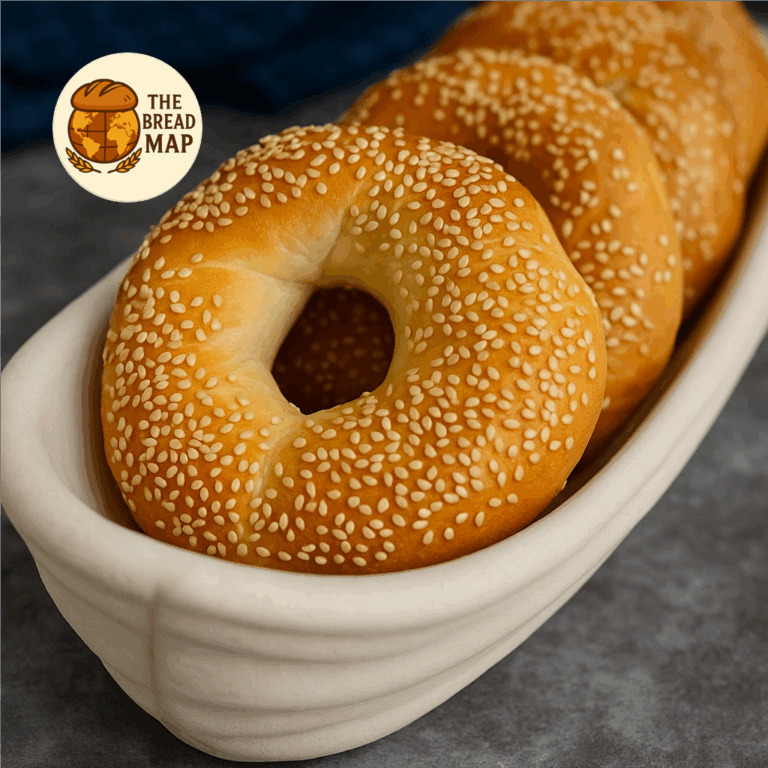
Golden brown, encrusted with toasted sesame seeds, and shaped into a perfectly round ring — simit is Turkey’s most beloved street bread. Whether you’re wandering through the bustling markets of Istanbul or sipping çay (Turkish tea) at a corner café, simit is never far from reach. With its crisp, crackly crust and pillowy interior, it’s no wonder this bread has become a national staple steeped in tradition and flavor.
Historical Background
The origins of simit stretch back to the heart of the Ottoman Empire, where this iconic bread was first baked in palace kitchens as early as the 16th century. Historical records show its popularity growing among the urban population in cities like Istanbul, thanks to its affordability and portability. Over time, it transformed into a symbol of everyday life, sold by street vendors from wooden carts across the country.
Some believe simit may have evolved under the influence of Arab and Byzantine ring breads, gaining its unique identity during the Ottoman golden age. Today, it remains largely unchanged — a testament to the timelessness of simple, well-executed baking.
Region of Origin
While simit can be found in nearly every corner of Turkey, it is most closely associated with Istanbul. The city’s vibrant streets are dotted with simitçi — street vendors balancing trays filled with freshly baked rings or pushing red carts with glass windows. Istanbulites often grab a simit on the go, pairing it with a slice of beyaz peynir (white cheese), olives, and a strong cup of tea.
Beyond Turkey, variations of simit appear in the cuisines of Greece, the Balkans, and the Middle East, with regional differences in size, texture, and even toppings. But the Istanbul version remains the benchmark for perfection.
Ingredients and Preparation
The beauty of simit lies in its simplicity. Its dough is made from just a few basic ingredients, yet the preparation method gives it such distinctive character.
- Flour: Plain white flour forms the base.
- Yeast: For leavening and soft crumb texture.
- Water: To bind the dough and activate the yeast.
- Salt: For balance and flavor.
- Molasses water: The shaped rings are dipped in a mixture of grape molasses and water before being coated in sesame seeds, which gives simit its signature golden hue.
- Sesame seeds: Generously sprinkled around the exterior, offering crunch and nutty depth.
After shaping the dough into rings and letting them rise, bakers dip them in molasses water and douse them in sesame seeds. They are then baked in super-hot ovens until deeply golden and aromatic.
Cultural Importance
Simit is more than a bread — it’s a daily ritual. It’s the sound of early-morning vendors shouting in the streets, the rhythm of office workers grabbing breakfast on the go, and the scent that dances through neighborhoods just after dawn. In Turkey, eating simit is a multisensory connection to tradition and city life.
Whether served at home with a rich breakfast spread or snapped up quickly from a street cart, simit is deeply embedded in Turkish cultural identity. It pairs perfectly with slices of tomato, cucumber, brined cheeses, and — above all — a steaming glass of Turkish tea.
For travelers, trying simit is one of the most authentic ways to experience Turkish food culture. And for those afar, baking your own is a beautiful way to bring the taste of Istanbul streets into your kitchen.
So wherever you are in the world, take a bite, close your eyes, and listen — you might just hear the call of a simitçi echoing through the air.
Leave a Reply